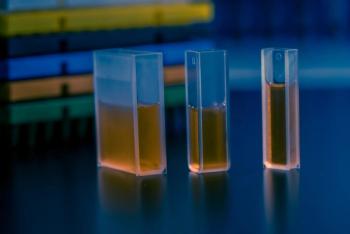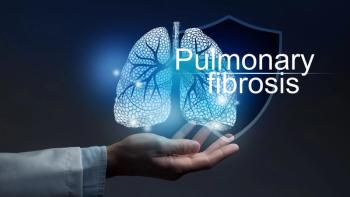
- Pharmaceutical Technology, October 2021 Issue
- Volume 45
- Issue 10
The Basics of Aseptic Processing
Susan J. Schniepp, distinguished fellow at Regulatory Compliance Associates, answers some commonly asked questions about aseptic processing.
Q. What is aseptic processing?
A. Aseptic processing is a manufacturing method that can produce product that is absent of bacteria without subjecting the product to terminal sterilization processes. Many products degrade and become ineffective when subjected to the harsh conditions of terminal sterilization. Aseptic process manufacturing allows these products to be produced in a sterile environment, allowing them to maintain their effectiveness while being safe to inject into patients.
Q. What is the difference between aseptic processing and terminal sterilization?
A. The major difference between aseptic processing and terminal sterilization is when the sterilization step occurs in the process. In terminal sterilization, the sterilization is performed after the API, excipients, containers, and stoppers have been assembled. The assembled product is then subjected to high heat and/or radiation that renders the final product sterile. Terminal sterilization processes are harsh and can have negative effects on the efficacy of the product. For products that can’t withstand terminal sterilization, manufacturers employ aseptic manufacturing. The aseptic manufacturing process requires the drug product and any excipients, the container, and the stoppers to be individually sterilized before being introduced into the cleanroom or sterile manufacturing core where the final product is manufactured in a highly controlled environment constantly monitored for air quality and potential microbial ingress.
Q. Why must manufacturers establish environmental controls for aseptic processes?
A. Let’s be clear, all drug manufacturing, including solid oral dosage form and terminal sterilization manufacturing are required to have established environmental controls. This requirement is addressed in global current good manufacturing practices (cGMPs). The purpose of these controls is to prevent product contamination due to insanitary conditions. The environmental controls to be monitored include, but are not necessarily limited to, air quality including particulate matter, ventilation, temperature, humidity, air pressure, and microbial contamination. The environmental control limits are, as expected, stricter for aseptic processing manufacturers due to the nature of their business.
Q. What does PUPSIT stand for, and why is it required?
A. PUPSIT is a term used in aseptic processing operations, and it stands for pre-use post-sterilization integrity testing. This testing is performed on the sterilizing filter after it is installed before product manufacturing and then again after the product manufacturing is completed. The purpose of the pre-test is to ensure that the sterilization and installation process has not damaged your filter prior to the filtration of your product. The purpose of the post-test is to demonstrate that the filter remained intact and undamaged during the actual filtration of the product.
An article published by the Parenteral Drug Association (PDA) states, “Since 1998, the EU Guidelines to Good Manufacturing Practice: Medicinal Products for Human and Veterinary Use, Annex 1 (Manufacture of Sterile Medicinal Products) or ‘Annex 1’ has contained the requirement for verifying the integrity of a sterilizing grade filter before use and after its sterilization. The requirement remained in the 2008 revision and in the 2017 draft revision to Annex 1. While not a requirement by the U.S. FDA, EMA inspectors and some PIC/S inspectors have been increasingly expressing expectations for companies to employ this testing procedure” (1). The article goes on to explain the concerns that led to the PUPSIT requirement: “Concerns have been raised that a sterilizing filter could develop certain flaws that would allow microbiological contamination to pass during filtration. The key is that flaws may be blocked or clogged by fluid contaminants or components during the filtration process and remain undiscovered during post-use integrity test. This phenomenon is sometimes referred to as ‘filter flaw masking’” (1).
Additionally, the article explores the rational for not employing PUPSIT because of the concern “that the contamination/product deterioration risk associated with performing PUPSIT may greatly outweigh the risk of product contamination as a result of the masking effect. To test a filter that has been sterilized by current means, the sterile filtrate side of the sterilized filter must be under atmospheric pressure, requiring a fluid pathway to remove any wetting agent. The exposure of the downstream portions of the sterile product transport line poses a risk to maintaining the sterility of the filtered product. This, along with other risks, including additional interventions in the aseptic space, increased complexity of the filtration system, execution of this additional tests, failure of PUPSIT assembly components and stress on sterilized filter to perform the test, is greater than the remote likelihood of microbiological contamination from a flaw which can be masked during use of the filter that is not detected afterwards” (1).
As indicated above, the PUPSIT concept is actively being debated. The best way to address the use/non-use of PUPSIT in your organization is to make sure you have an appropriate risk assessment in place defending your position.
Q. What makes aseptic drug manufacturing so challenging?
A. Aseptic manufacturing requires highly trained and experienced people to carry out the operations, special equipment, and cleaning procedures, and constant environmental monitoring even when the manufacturing area is not in use. The risk to the product and the patients is significant if the aseptic process is compromised.
Reference
1. T. Morris et al., “PUPSIT and the Annex 1 Revision,” PDA Letter, Aug 29, 2019.
About the Author
Susan J. Schniepp is distinguished fellow at Regulatory Compliance Associates.
Article Details
Pharmaceutical Technology
Volume 45, Number 10
October 2021
Pages: 58, 57
Citation
When referring to this article, please site it as S. Schniepp, "The Basics of Aseptic Processing, Pharmaceutical Technology 45 (10) 2021.
Articles in this issue
about 4 years ago
Automating Aseptic Manufacturingabout 4 years ago
Considering Bio/Pharma Reformulation Strategiesabout 4 years ago
Pharma Sets a Foundation for Greener API Manufacturingabout 4 years ago
Adopting Continuous Manufacturing for Solid-Dose Drug Productsabout 4 years ago
Determining Shelf Life: Reading the Stability Testing Dataabout 4 years ago
Trends Affecting Biopharmaceutical Manufacturingabout 4 years ago
European Pharmacopoeia Updates: EDQM Tackles Nitrosamine Impuritiesabout 4 years ago
Public Trust in Medicine Quality as Public Health Challenges Emergeabout 4 years ago
FDA Moves to Advance Innovative ExcipientsNewsletter
Get the essential updates shaping the future of pharma manufacturing and compliance—subscribe today to Pharmaceutical Technology and never miss a breakthrough.





